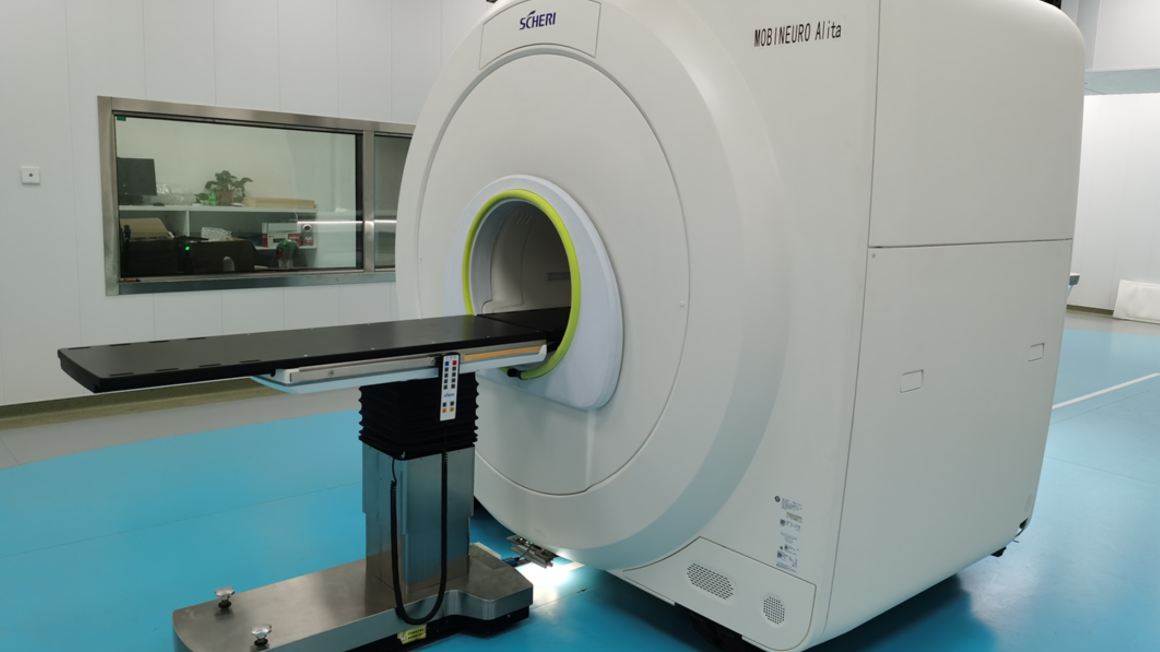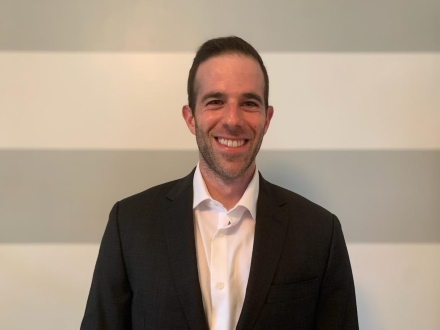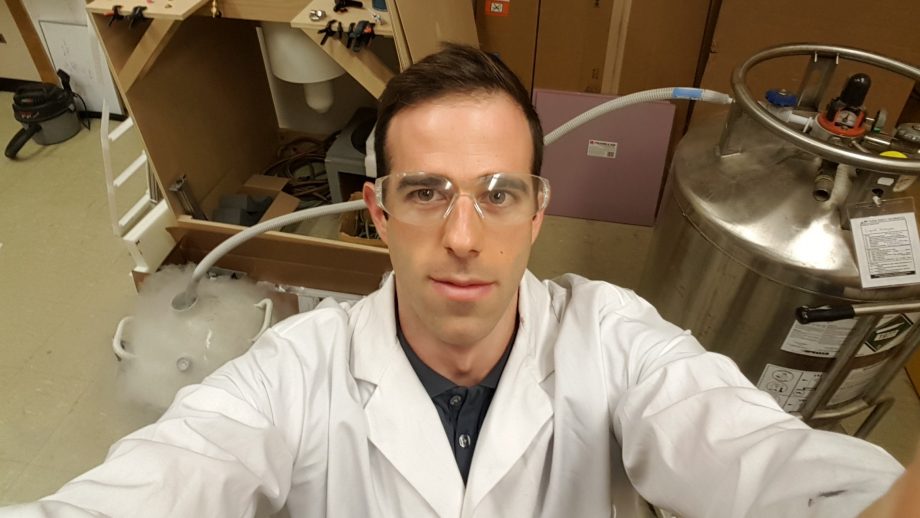A postdoctoral fellow who began his academic career at The University of Winnipeg is playing an integral role in the development of a next-generation intraoperative MRI (iMRI) system that is more user-friendly for neurosurgeons and more affordable for hospitals.
Dr. Michael Lang, Research and Development Scientist with Sino Canada Health Institute Inc. (SCHI), and his postdoctoral advisor, Dr. Melanie Martin, Professor in the Department of Physics and Co-Director of The University of Winnipeg Brain Imaging and Metabolic Research Lab, are coauthors of a newly published paper detailing the successful testing of the first ground-based, cryogen-free mobile iMRI system.
“Intraoperative MRI is really the gold standard for neurosurgery, because it allows surgeons to verify if they’ve done the job properly before they close the patient up,” said Dr. Lang, who graduated from UWinnipeg in 2011. He became a UWinnipeg postdoctoral fellow in 2020 after completing a master’s and PhD at the University of Manitoba.
We’re pushing toward something big, we’re going to help a lot of people, and that’s really what I’m excited about.
Dr. Michael Lang
SCHI’s novel ground-based iMRI system eliminates the need to move a neurosurgery patient back and forth between an operating room and an imaging room to update images of their brain.
“Surgeons, generally speaking, do not want to move a patient during a procedure,” Dr. Lang said. “If the patient can stay in one spot, it’s a much safer approach.”
A Winnipeg company called IMRIS, founded in 2005, developed a ceiling-mounted rail system that brings the iMRI system to the patient.
“That is a good system and surgeons love it,” Dr. Lang said, “but it’s extremely expensive and also requires a lot of downtime in hospitals for installation, in terms of having to suspend several tons of weight from the ceiling.”
SCHI, which Dr. Lang joined at an early stage of the company, has developed a floor-moving mobile magnet iMRI system.
“We basically mount the magnet on a track-based crawler,” he explained. “The magnet moves across the floor, over the patient, takes the images, and then moves back. We could potentially install two or three of these in the same time and cost frame as installing one ceiling-mounted system.”
Dr. Lang and his team had to overcome several challenges during the design stage. For instance, radiofrequency coils need to be as close as possible to their target, but neurosurgical patients wear a bulky apparatus during surgery to steady their head. The system also needed to be cryogen-free, meaning it’s made without liquid helium, a scarce and non-renewable resource.
International and industry collaboration was involved in developing the iMRI system and bringing it to market. Dr. Lang was previously awarded a $55,000-per-year Mitacs Accelerate Postdoctoral Award, which promotes collaboration with industry, and was part of the Dr. Martin-led team that received a $100,000-per-year NSERC Alliance Grant, which encourages university researchers to collaborate to address complex challenges.
Raising Winnipeg’s profile
Winnipeg has played a central role in the development of a system that may one day be used around the world.
“The idea was conceived and developed here in Winnipeg, and much of the hardware was built here,” Dr. Lang explained.
SCHI has already improved upon its initial prototype, which was tested during surgery on a pig’s head. SCHI then forged a relationship with a leading MRI manufacturer to develop a second prototype, which is based on a 1.5-Tesla MRI system. After extensive testing, the system was approved for sale in the United States by the U.S. Food and Drug Administration.
Dr. Lang has recently co-founded a new Winnipeg company, τauMEDIS Inc., that will manufacture and distribute ground-based iMRI systems for the North American and European markets. He hopes the company will eventually attract more doctors, surgeons, and diagnostic imaging technicians and researchers to Winnipeg.
“I’m really hoping that what we’re doing here is going to strengthen the medical imaging community in Winnipeg, because we have strong history in this area and have had difficulty maintaining it over the years,” he said.
In September, Dr. Lang will promote the iMRI system at a neurosurgical conference in the United States.
“It’s really exciting,” Dr. Lang said. “We’re pushing toward something big, we’re going to help a lot of people, and that’s really what I’m excited about.”
Dr. Martin, whose expertise on iMRI software complements Dr. Lang’s focus on hardware, said it’s likewise exciting to see a former physics undergraduate student forge a career at the cutting edge of medical innovation.
“Dr. Lang has been instrumental in developing and getting this new iMRI system ready for market,” she said. “The Mitacs program allowed him to develop his technical skills further. It was a pleasure working with Dr. Lang on this project and I hope we can continue to work together to bring similar opportunities to more UWinnipeg students and postdocs.”
Dr. Lang said working with Dr. Martin “has always been great.”
“She is just a wealth of knowledge when it comes to magnetic resonance, imaging techniques—all of the fundamentals and background of that kind of stuff,” Dr. Lang said. “She’s such a strong advocate for students and such a helpful person. She really goes above and beyond.”



